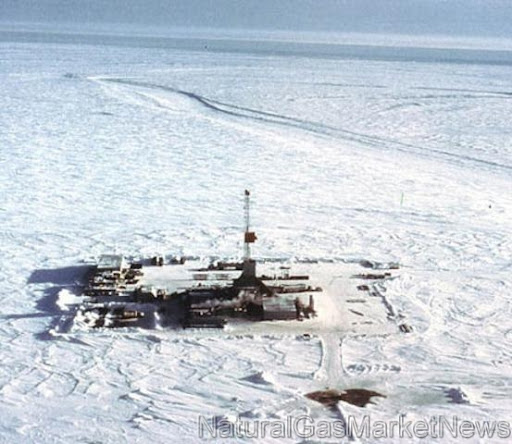Wednesday, 16 March 2011
Natural Gas Rises on Outlook for Surging Japanese LNG Demand
 March 14 (Bloomberg) -- Natural gas futures gained for a second day in New York on speculation that liquefied natural gas cargoes will be diverted to Japan after earthquake damage to nuclear reactors there cut power production.
March 14 (Bloomberg) -- Natural gas futures gained for a second day in New York on speculation that liquefied natural gas cargoes will be diverted to Japan after earthquake damage to nuclear reactors there cut power production.
Gas advanced 0.6 percent as workers battled to prevent a nuclear meltdown at an atomic plant north of Tokyo. Demand for the fuel to produce electricity in Japan may increase by about 8.6 percent, analysts with Barclays Capital said in a note to clients today.
“Disruptions in Japanese nuclear power are going to be very bullish for LNG,” said Jason Schenker, the president of Prestige Economics in Austin, Texas. “Absolutely you are going to see a diversion of cargoes from the U.S. as part of a global displacement of supply.”
Natural gas for April delivery gained 2.5 cents to settle at $3.914 per million British thermal units on the New York Mercantile Exchange. Gas has dropped 11 percent this year.
About 1.7 percent of U.S. gas supply comes from LNG shipments, according to Energy Department estimates. LNG is gas cooled to about minus 260 degrees Fahrenheit (minus 162 Celsius) and shipped in tankers.
Rising LNG demand from Japan may also reduce cargoes to the U.K. Societe Generale, France’s second-largest bank, raised its average price forecast for U.K. gas this year by 8.9 percent to 49 pence a therm. The forecast for 2012 increased 11 percent to 50 pence a therm.
U.K. Gas Market
The U.K. winter gas contract for fuel to be delivered in the six months starting October rose as much as 7.4 percent to 74 pence a therm today. That’s the highest since November 2008, broker data on Bloomberg show, and equal to $11.90 per million Btu. The contract was up 4 pence to 72.9 pence as of 3:50 p.m. New York time.
Eleven reactors were shut in Japan after the earthquake. Nuclear power accounts for about 30 percent of the country’s electricity.
Japan is the biggest user of LNG, accounting for 35 percent of global trade in 2009, BP Plc statistics show. The country has no domestic gas production and no import pipelines, so it relies on LNG for its needs.
Japanese LNG demand may rise by 800 million cubic feet per day to account for reduced nuclear capacity, Barclays Capital said in the note. The country consumed an average of 9.3 billion cubic feet per day last year, said Biliana Pehlivanova, a New York-based analyst at Barclays.
Demand Forecast
Japanese demand for gas to produce power may increase by 5 billion cubic meters in 2011 as a result of the March 11 earthquake, Thierry Bros, a senior analyst at Paris-based Societe Generale, in a note to clients today.
More LNG shipments to Japan means “cargoes not ending up in U.S. storage, so a little bullish in the coming weeks on storage,” Drew Wozniak, vice president of market research and development for ICAP Energy in Louisville, Kentucky, said in a note to clients today.
Fifteen U.S. reactors use a similar design to the General Electric Co. unit at Tokyo Electric Power Co’s. Fukushima Daiichi No. 1, Hugh Wynne, a New York-based analyst for Sanford C. Bernstein, said in a note to clients today.
Demand for natural gas from U.S. electricity generators may rise “medium- to longer-term” as the temblor in Japan prompts greater scrutiny of nuclear power, said Anuj Sharma, an analyst at Pritchard Capital Partners in Houston.
Nuclear Safety
“Concerns about nuclear safety and the additional costs of regulatory scrutiny would make natural gas more attractive,” Sharma said. “Gas is already being touted as a cleaner alternative to coal and other sources of energy.”
Electric power comprises 31 percent of U.S. gas consumption, according to the Energy Department.
U.S. gas inventories totaled 1.674 trillion cubic feet for the week ended March 4, 1.3 percent above the five-year average and 1.9 percent above year-earlier levels.
The only LNG export terminal in the U.S. is in Kenai, Alaska. The plant’s owners, Marathon Oil and ConocoPhillips, have said they will shut the terminal amid dwindling production in the region.
Some LNG cargoes originally sent to U.S. import terminals were stored and then shipped back overseas because of growing shale-gas production in the U.S. The U.S. re-exported at least 12 shipments in 2010 and four in January 2011 to countries including U.K., Spain, India and South Korea, according to the Energy Department.
“The Japanese situation might bring a little bit of pressure on the market,” said Gene McGillian, an analyst and broker at Tradition Energy in Stamford, Connecticut. “We’ve been overextended on the downside.”
Gas futures volume in electronic trading on the Nymex was 249,254 as of 3:02 p.m., compared with the three-month average of 298,000. Volume was 297,016 on March 11. Open interest was 929,907 contracts. The three-month average open interest is 862,000.
The exchange has a one-business-day delay in reporting open interest and full volume data.

This post was written by: HaMienHoang (admin)
Click on PayPal buttons below to donate money to HaMienHoang:
Follow HaMienHoang on Twitter













0 Responses to “Natural Gas Rises on Outlook for Surging Japanese LNG Demand”
Post a Comment